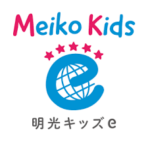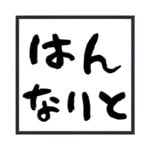
If you thought that landing a job in a Japanese company was already hard enough, well… brace yourself!
Understanding the intricacies of the Japanese corporate culture is no joke. This article is meant for non-Japanese employees who want to connect with their Japanese co-workers. If you want to excel as a member of a “kaisha” (word for “company” in Japanese), you need to understand the social and cultural background behind Japanese corporate culture.
We’ll cover the concept of “Japanese way of work”, some of the philosophies and communication tools, as well as some advice for non-Japanese employees. So hopefully, by the end of this article you will know how to win your way in Japanese corporate culture.
THE JAPANESE WAY OF WORK
For a Japanese person, working is not just about getting a salary in exchange for performing tasks. It is true dedication towards the company one works for, which in return grants lifetime employment to all its employees, or at least that’s how it used to be in the 60s and 70s.
This mindset of putting one’s heart and soul into a job in order to excel for the sake of the whole entity comes from Shintoism, Confucianism and Buddhism. Even though things are slowly changing with time, you can’t help but notice the byproduct of this cultural heritage on Japanese corporate culture. Everything from how relationships are developed to the quality level of the final product or service and the work-life balance, is affected.
Some examples of the Japanese Way Of Work are:
Kikubari
Empathy, Selflessness, Community-Mindedness.
There is no direct translation for this term, but the words above should help you get an idea of the meaning it conveys. Being aware of people’s needs and acting upon them before requested is part of Japanese “omotenashi” or hospitality.
Top-Notch Quality
Achieving the best at your first attempt might seem like the Japanese way (especially if you have ever been a teacher here). Don’t forget that you can’t achieve perfection without taking a trial an error approach. A step by step approach which makes you learn from your mistakes (even if you have to apologise for making them) is important in Japanese culture, where making those mistakes is not only acceptable but necessary for improvement.
Service Zangyou – Overtime Work
Leave only when you feel accomplished and as if you gave your all. Staying long hours allows you to learn more and achieve perfection. However, in some circumstances you don’t have to do overtime, even if you are asked to do so. Since this is a delicate and wide topic we have a separate article Unpaid Overtime in Japan, addressing it, where you can find some useful tips.
Gemba
The term Gemba means “the actual place”, or the place where work is done or value is created. To get answers, you need to go to the real place, get the real facts, ask and learn. What this means in a corporate environment is that you can gain your superiors’ trust if you “go to gemba“.
Show them you are in charge and directly go check for yourself what the problem is where it matters the most. This way you won’t fall in the mistake of just looking at results and evaluating superficially what has happened. Instead, you will have the chance to understand the actual source of the issue. If you want to know more about this concept you can check out this article titled “What is Gemba: Definitions and tools”, which describes how “Gemba walks” are carried out in a business context.
How Do These Concepts Translate Into Internal Organizational Processes?
5S
This control system helps employees setting themselves up for success.
How?
By structuring a series of best practices to keep the working environment cost-efficient and effective, or better, ready, like a blank canvas, for a smooth and safe decision-making process.
5S stands for: “Sort”, “Set in Order”, “Shine”, “Standardize” and “Sustain”. It makes companies identify which items are necessary in the work space, how to store or arrange them in an efficient way, how to keep the area flawless, creating standardization and finally reviewing and maintaining each process. If you want to dig deeper into the topic, have a look at this article about How to put the 5S into work.
PDCA
PDCA is an acronym which stands for “Plan”, “Do”, “Check” and “Action”. Its purpose is to ensure process control and create constant improvement. Its application is valid in any environment, company and role.
“Planning” consists in setting goals in line with the company’s interest, create a plan of action and a schedule to act upon those actions.
“Doing”, as straightforward as it sounds, is about putting into action your planification, while making the appropriate adjustments.
Following that, a “Check” of the previous steps is carried out.
Finally, in the “Action” stage, you need to act upon the result of your evaluation.
Kaizen
The way a Japanese company grows is through daily small steps. No need for a revolution. Instead, steady and constant improvement to increase cost-efficiency and create better and safer working environment is preferred.
This approach is applied at every level of the company from a simple working station to an entire process. Everyone is responsible for it, from the office worker to the CEO. All employees are engaged in improving the company. This concept has been applied in many fields to improve standardized processes. One of the aspects it tackles is reducing waste, of any kind. Such as, over production, idle time, excessive movement and excessive use of resources.
A Tool For Communication: Horenso
The last acronym I am going to talk about is probably the most prized piece of knowledge you need to master to get a ticket into a smooth integration in the Japanese corporate culture.
Contrary to what western companies do, Japanese companies do not set up processes nor assign specific roles to employees through which information flows in a pre-set and regulated manner. This ecosystem is based on mutual trust, harmony and voluntary participation. This way, information sharing happens seamlessly via human interaction more than via email or company social networks.
Horenso is a term that encompasses three communication tools used in Japanese corporate culture : Hokoku, Renraku and Sodan.
Hokoku
Reporting the current status of your tasks or recent changes to your project. It is part of the concept of mutual help and co-operation I mentioned before. Not only that, it can be a good opportunity for you to receive a valuable advice from your supervisor. Not to mention that this constant verbal and written reporting builds mutual trust.
Renraku
Bridging pieces of information to fill in the blanks. It can be anything from small pieces of knowledge you capture while talking to your colleagues, to details of a meeting your co-worker didn`t attend, to interesting stories or whatever can be of help or provide a further insight for your co-workers to use. Always share any useful information!
Sodan
Seeking advice to solve a problem. Ask your supervisor to brainstorm with you and make sure that the problem you are trying to raise matters to the company in the same way it matters to you, remember it is always about mutual help!
Advice For Non-Japanese Employees
Develop Relationships
Mingle with your co-workers before and after work.
Creating bonds that go beyond the working environment is fundamental to be part of a Japanese firm. Of course, especially at the beginning, communication can be hard, since you might not be able to speak Japanese as soon you as land in Japan. You can find some tips on how to overcome language barriers at your work place, in another article in our Blog. Take advantages of any after-work initiatives, dinners and nomikai, i.e. company drinking parties, to deepen your bond with your co-workers.
Get Used to Frequent Meetings
Once you start working for a Japanese company you will find yourself attending more meetings than you expected. Even though it might feel like a waste of time to you, it is an important moment for your colleagues to share information. Every detail is examined to make sure everyone is on the same page. Once this is done, the implementation can proceed quickly and smoothly.
“Ohayou Gozaimasu” & “Otsukare Sama Desu”
Saying a loud Good morning or “Ohayou Gozaimasu” is important to start off your day and communicate with you colleagues.
What about when you leave the office?
Use the following formulas to let people know your whereabouts. If you leave before your co-workers you should say “Osakini Shitsurei Shimasu” which means “I’m sorry for leaving earlier than you”. Instead, if you leave at the end of the day just say “Otsukare Sama Desu” which can be roughly translated as “I hope you are not too tired”. In both cases you will receive a warm “Otsukare Sama” in return.
Apologize, a Lot!
There is no shame in apologizing, quite the opposite, it’s a sign of integrity and courage. Don’t try to justify your mistakes, take full responsibility for your project and your tasks. You will gain everyone’s respect.
Show Appreciation
As a collective society, mutual help is fundamental for everyone’s well-being. “Arigatou Gozaimasu” is a way to be thankful for the karma that you have exchanged with the person who has helped you. Also, don’t forget to mention what you are thankful for; help, coaching, kindness, don’t let your appreciation appear empty. In Japanese culture is very important to specify what you are thankful for.
To Wrap up
By no means this short guide is meant to be exhaustive. In fact, I would encourage you to “do your homework” and research more about Japanese corporate culture. If you want to dig deeper into Japanese traditions, the day-to-day behavior that is expected by Japanese employees and even dialogue examples of common situations occurring in the corporate office in Japan, in both Japanese and English, have a look at Winning Together at Japanese Companies by Takashi Kawatani. This short guide helped me a lot during my first months in a Japanese company.

















